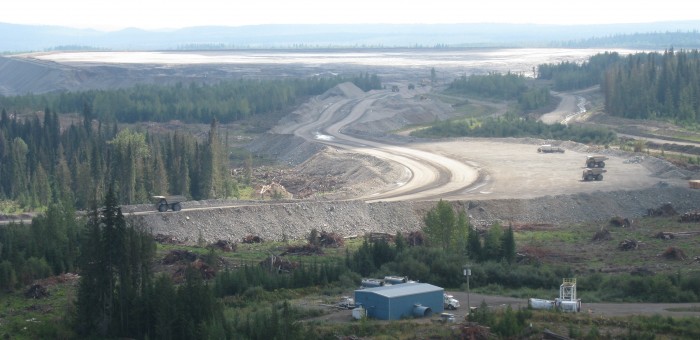Mount Polley report emphasizes need for paradigm shift in management of mine tailings
Earlier today the BC Government released its long awaited Independent Expert Engineering Investigation Review Panel Report on the Mount Polley Tailings Pond breach. This Panel was empowered to investigate and report on the cause of the failure of the tailings pond facility that occurred on August 4th, 2014 at the Mount Polley Mine. In addition, they were asked to provide recommendations about how such an incident could be avoided in the future.
It’s important to note that while the panel was asked to point to the cause of the breach, it was restricted from assigning guilt or impeding two other ongoing investigations.
In their conclusions, the panel determined that the “dominant contribution” to the failure was the design of the tailings dam. The design failed to take into consideration key geological issues with the foundation. This was referred to by the panel as the “loading of the gun”. What “pulled the trigger”, and ultimately caused the breach, was the construction of a downstream slope at too steep an angle to account for the weakness in the tailings pond’s foundations. Essentially the wall of the tailings pond could not support the load being placed on it, and gave way without any warning.
This report’s contribution goes far beyond simply identifying the cause of this specific breach – it contains a number of important recommendations, which, if enacted, will go a long way towards improving the safety of how mines handle their tailings.
According to the expert panel, tailings pond technologies, such as those implemented at Mount Polley, have not fundamentally changed in the past one hundred years. Yet, alternatives to conventional tailings ponds exist and have been successfully implemented in other jurisdictions. The question is: why are these other technologies that have been shown to reduce the risk and impact of tailings failures not standard practice in B.C.?
Going forward, we need to do more than simply look at updating new standards of practice and technologies. We also need to explore how the technologies and practices that we have been using – and that were used at Mount Polley – were allowed to fall behind in the first place. One of the key lessons contained in this report is that a thorough safety analysis should come before a conversation about the economic viability of a mine. The government has announced that a number of new mines will be opening over the next few years. In my opinion, it’s critical that proposed new mines are developed within the the scope of recommendations contained in this report.
The Minister of Energy and Mines, Bill Bennett, has committed to a number of initial steps that will explore whether other tailings ponds are at risk of failing due to similar causes that led to the Mount Polley breach. However, there has not been enough clarity about the steps government is taking to look to address the underlying issues that have allowed BC’s mining practices and technology to fall behind best-practice standards.
One of the most important comments in the report is the statement that that in order to achieve zero failures, incremental changes will not be sufficient. This critically important report provides guidance to both government and industry as to how tailings should be safely handled now and into the future using 21st century technologies and practices. It’s imperative that both government and industry act upon all the recommendations of this report.
I will be writing further on this topic in the coming weeks.





4 Comments
As stated in ‘Cabaret’, Money makes the world go round. It also makes governments choose to support those who pass it on with strings attached. I submit this article to show why Mount Polley happened as it did:
http://www.vancouverobserver.com/opinion/damning-money-trail-behind-imperial-metals-mount-polley-disaster
Bill. Bennett. Lightweight. Enough said.
Is it possible that extreme intense precipitation was a part of this accident? And if so then #climate has played a not so subtle role here. Just like the mill explosions due to the dry lumber now being milled which cause build up of more explosive dust.
the material over topped the wall. The pond was too full. Its that simple.
http://www.theglobeandmail.com/news/british-columbia/timeline-from-report-of-events-that-lead-to-mount-polley-breach/article22731350/